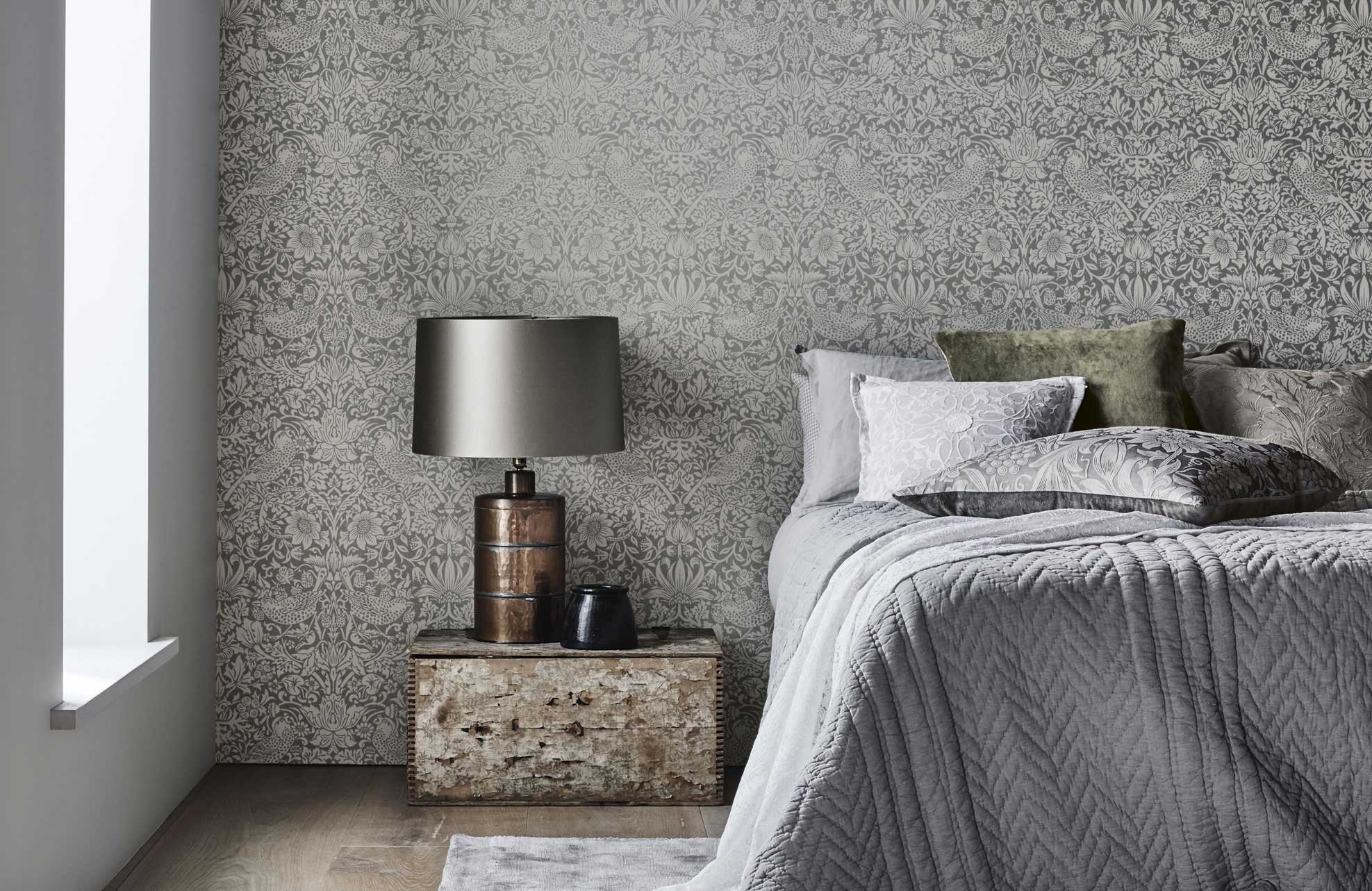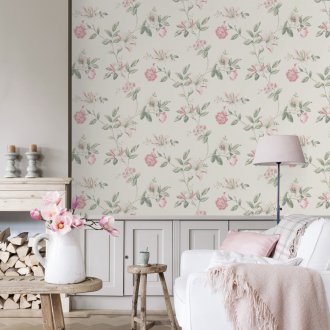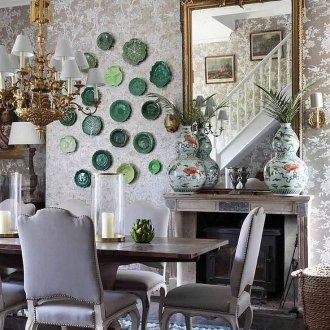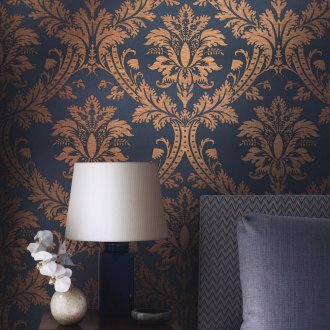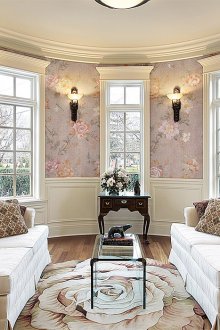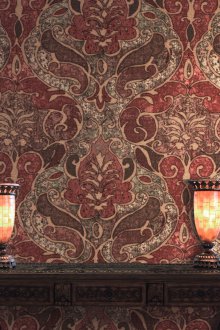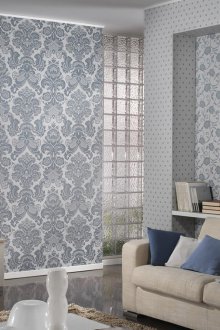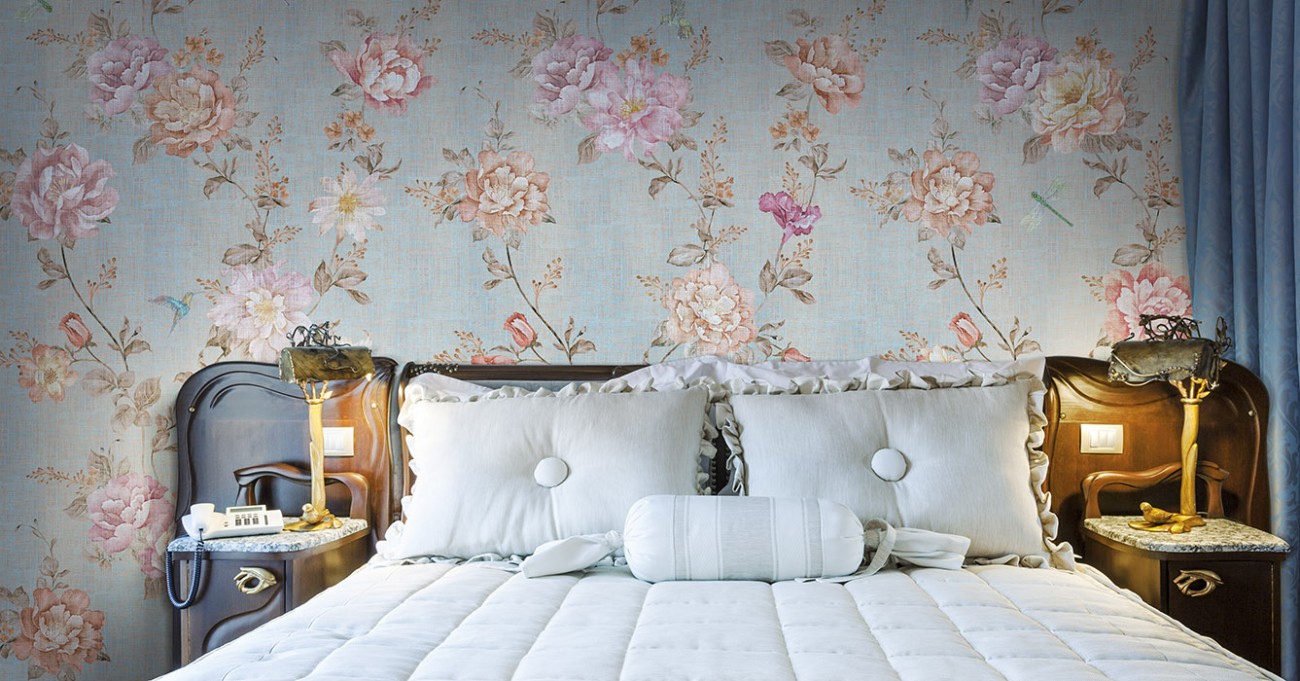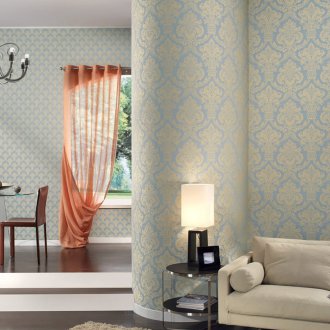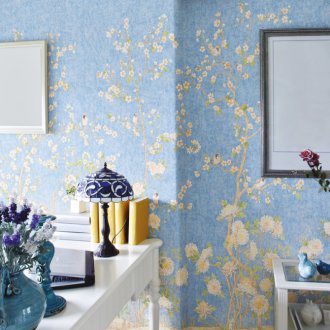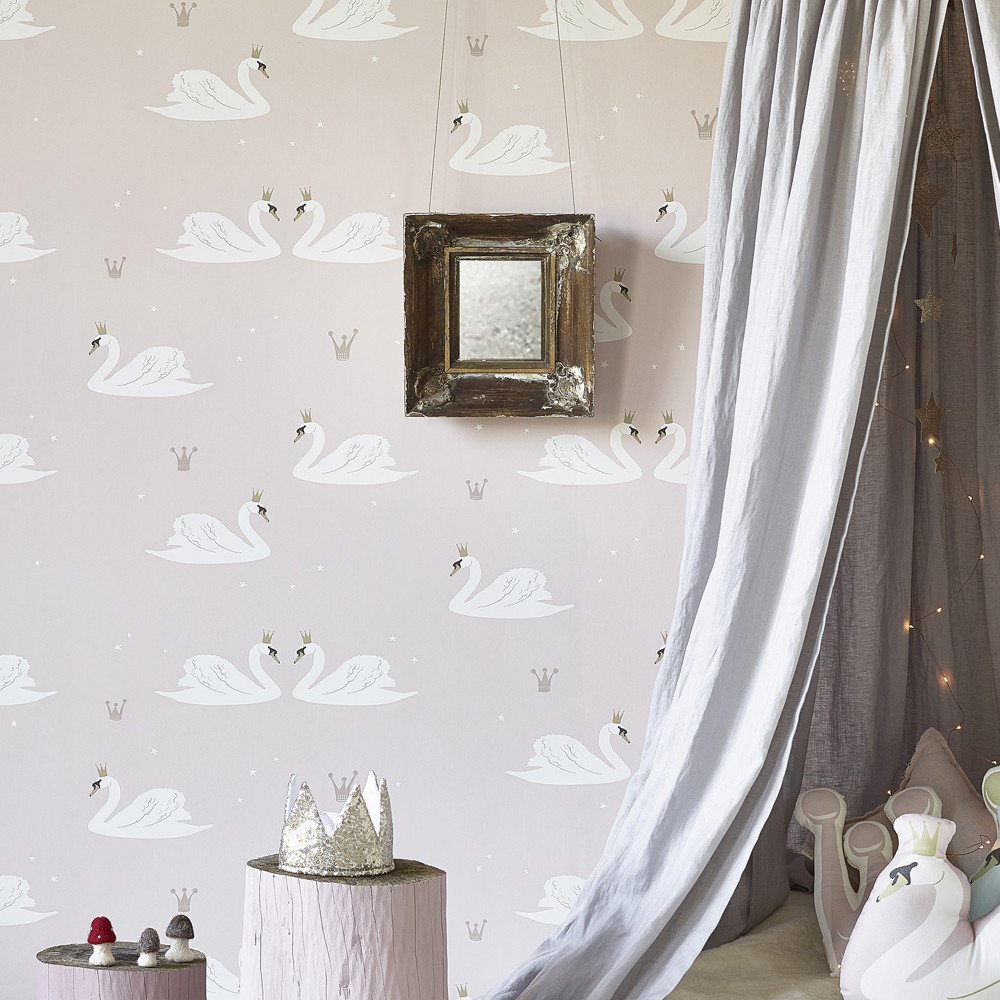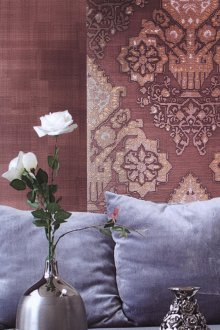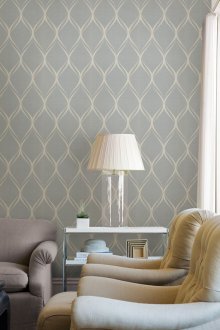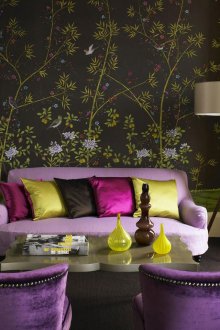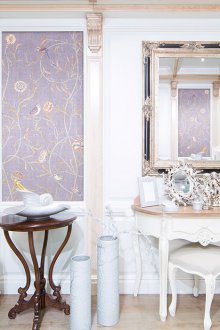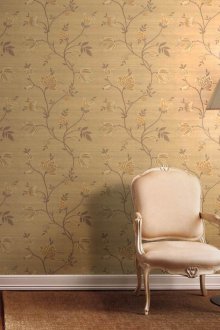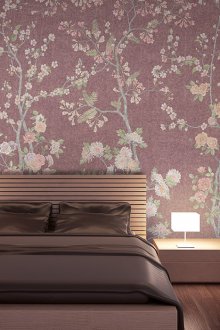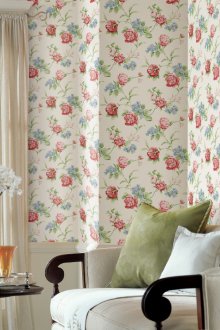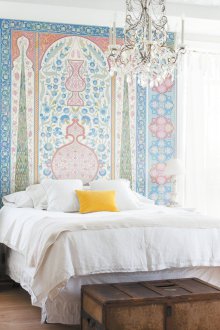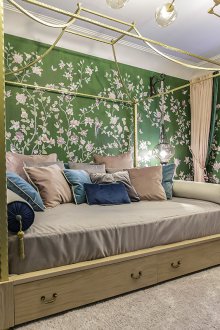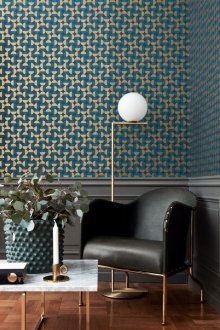Seamless textile wallpaper - forgotten classic (28 photos)
Although this design method is one of the most advanced and popular today, gluing seamless wallpapers began many centuries ago. That is how the houses of the famous nobility took shape. A dense heavy canvas was placed on the walls, and thanks to its integral texture, it made the room complete and perfect.
Today, seamless fabric wallpapers are most often used in interiors made in classic styles or in the Art Nouveau style. It can be monophonic canvases or solid paintings of complex shapes. Most often, such a wallpaper decorates the entire room, but there are options for interiors when only one wall is decorated with a seamless canvas.
In modern interiors, there are also not only seamless wallpapers for walls, but also options for the ceiling. They are of high cost, and only specialists can mount such structures, but the final result is worth all the investment.
The fabric texture of the wallpaper is pleasant to the touch and well retains heat, which allows you to create a feeling of comfort and tranquility in the rooms. In addition, seamless wallpaper made of fabric is an excellent sound insulation, so such coatings are increasingly used in bedrooms and workrooms.
Varieties of seamless paintings
This type of fabric wallpaper can be made in various variations: from silk, jacquard, linen and other threads. Such a variety of textures gives rise to an abundance of possible colors. Solid, light, white and beige, bright and unusual - a seamless texture allows you to create unique design options. For example, silk wallpapers are most often decorated with images of fantastic birds and flowering trees, which will look great if your interior is made in an oriental style.
For those who can not decide on the choice of ready-made colors, designers have developed seamless wallpaper for painting. With such wallpaper you can not only create your own interior, but also change it when you want.
Children’s fabric wallpaper of a seamless type have bright and cheerful colors and also perfectly retain heat in the room and protect against extraneous sounds. Such wallpapers can be used both in the room for babies and in rooms of older children.
Sticking seamless wallpaper
The essence of seamless wallpaper lies in the fact that they are placed on the surface with a single canvas, hence there may be difficulties in gluing the material, so it is better to entrust this procedure to professionals or to work as a large company.
Before gluing seamless wallpaper, once again measure the footage of the room, remove all the platbands and baseboards, stock up with the necessary tool. For gluing, it is better to choose glue for heavy wallpapers, it will provide better adhesion to the wall surface.
Seamless wallpaper is glued horizontally from floor to ceiling, the canvas is not cut. A feature of gluing this type of wallpaper is that in the course of work all doors, windows and other openings in the room are sealed. At the final stage, they are cut along the contour.
So, the algorithm for working with a seamless canvas:
- Clean walls and corners. If necessary, level and carry out additional surface preparation.
- Remove platbands, baseboards, baguettes.
- Place the roll in the corner where the work will begin. Most often, this is the corner where all massive furniture will be placed in the future.
- Spread up to two meters in length with glue and attach the canvas.
- Press the canvas firmly against the wall, fix the top and bottom with special rails, this will save the surface after drying.
- Unroll the roll and stick it further along the perimeter of the room, firmly pressing it to the wall and fixing. Every two meters, check the verticality of the canvas with a laser level or plumb.
- When you return to the reference point, you need to fix the canvas so that the seam is barely noticeable.
- Surplus cut, cut windows and doors.
- Remove the reiki only after the canvas has completely dried and fixed on the surface.
- Install removed platbands and skirting boards.
At first glance, the gluing procedure seems to be very simple, but this impression is erroneous. It is better to entrust this work to a construction team consisting of several people, because the process requires coordinated coordination of actions around the entire perimeter of the room and has an increased power load - seamless wallpaper is most often produced in rolls of 50 m.


